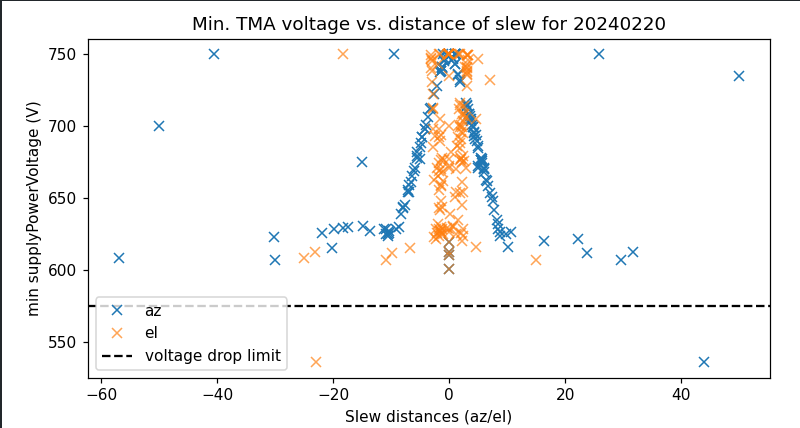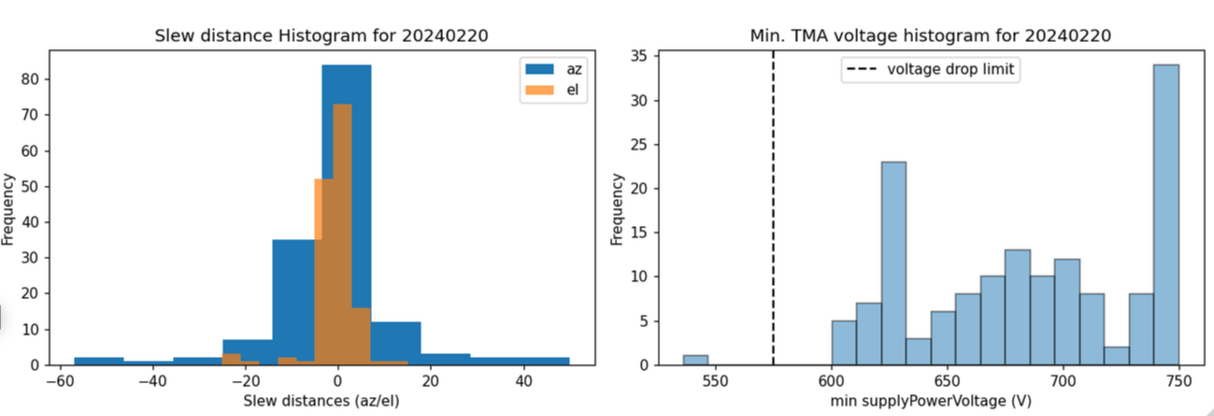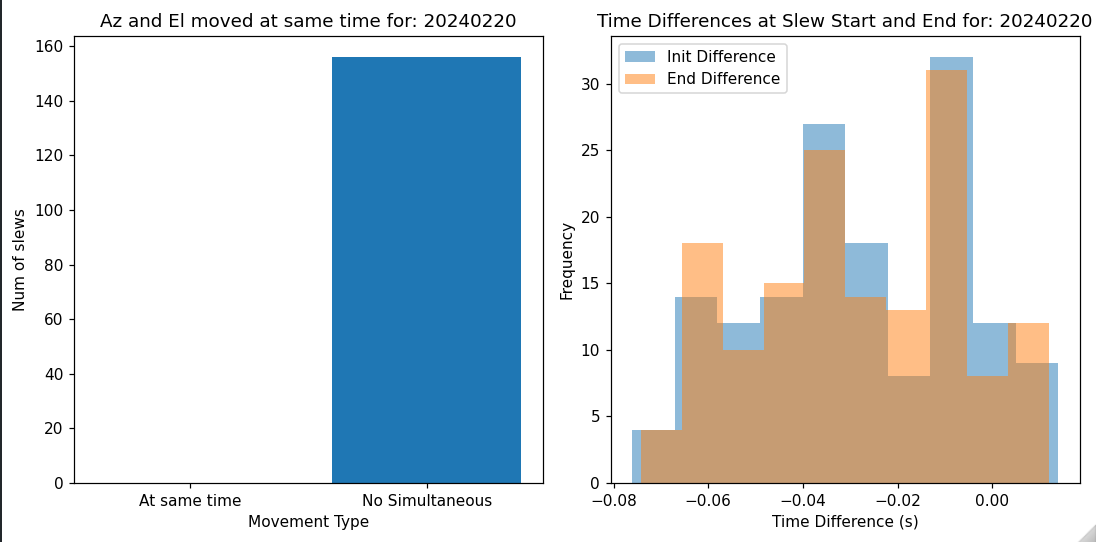TMA Capacitor Bank discharge vs Acceleration profiles#
Abstract
Continue the analysis started in SITCOM-1146. Based on the input from a team review, focusing on aspects below. Another ticket opened to investigate current draw profiles.
Relationship of min power supply voltage and distance of slew
Explore when Az and El moved at same time, rather than separately
Look at Azimuth acceleration vs. power supply voltage
Introduction#
The contractor responsible for the TMA Power supply and capacitor banks, Phase, has indicated that it is best to keep the voltage drops during a slew to above 575 V. Excessive loss of power from the TMA could lead to poor performance of observations due to the telescope not being able to move properly. In this analysis we have followed the one performed on the SITCOM-1146, identifying each slew of the observation nights using TMAEventMaker(). Selecting:
lsst.sal.MTMount.mainPowerSupply
lsst.sal.MTMount.elevation
lsst.sal.MTMount.azimuth
These tests analyze what is the min power supply voltage along the different movements that the telescope performs during slew (analizing their velocities and acceleration) and if in some positions or concrete movements could suggest problems. We explore the minimum powerSupplyVoltage as a function of slew distance, as well as the behavior during velocity and acceleration. We also explore when the telescope moves in azimuth and elevation at the same time and when it moves separately.
Results have been analyzed for observing nights 20240220 and 20240221. During these dates it was not possible to accelerate the telescope so the final results of this analysis are pending observational data.
Execution Details and Data#
Details of the code can be found at this github repository
We have performed the following analyses:
Relationship of min power supply voltage and distance of slew#
We have investigated the relationship between the minimum power supply voltage and the distance of slew.
Initially, we attempted to calculate the slew distance using the formula for angular distance. In this analysis, we included an explanation of the formula and the function calculate_angular_distance, although ultimately, it was not used due to errors it generated.
Therefore, to analyze the slew distance, we calculated the azimuth and elevation distances. For each observation day, we examined the scatter of the differences in azimuth and elevation at the start and end of the slew with their respective minimum supply power voltage. Additionally, we created histograms of these differences in the slew and of the minimum supply power voltage used.


Explore when Az and El moved at same time, rather than separately#
We are going to analyze the data for different days to identify instances when the telescope moves simultaneously in both azimuth and elevation.
To accomplish this, we’ll initially compare the timestamp at the beginning and end of each slew for both azimuth and elevation.
We’ve categorized our observations into two groups: instances where the telescope moves in azimuth and elevation simultaneously, and instances where it doesn’t.
We observed that in all cases, the start and end times of the movements in azimuth and elevation were different. However, upon closer examination, we found that these differences were consistently minimal, typically less than 0.1 seconds.

Look at Azimuth acceleration vs. power supply voltage#
We have analyzed the relationship between velocity and mass acceleration with respect to the minimum supply power voltage, as well as the slew distance for azimuth.
Subsequently, we selected those slews with a supply power voltage lower than 575 (V) and analyzed the slew distance.


Add content here#
See the Documenteer documentation for tips on how to write and configure your new technote.